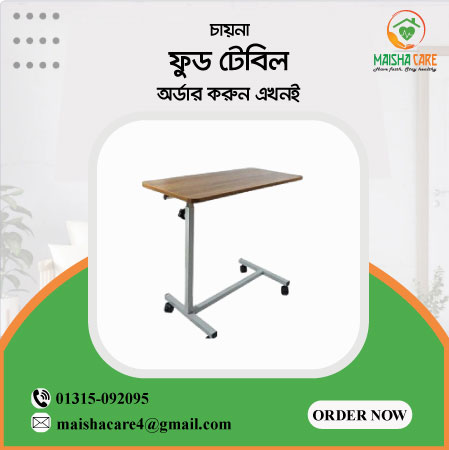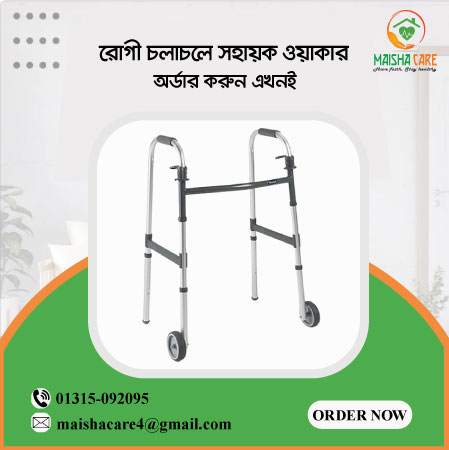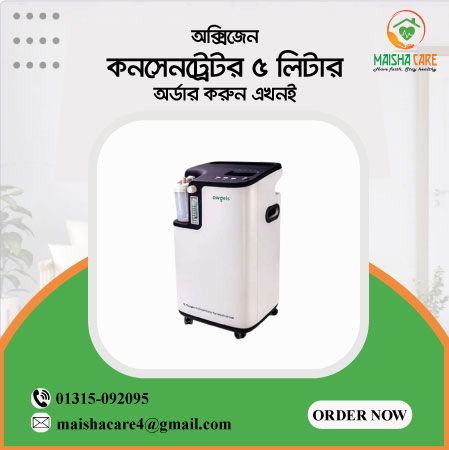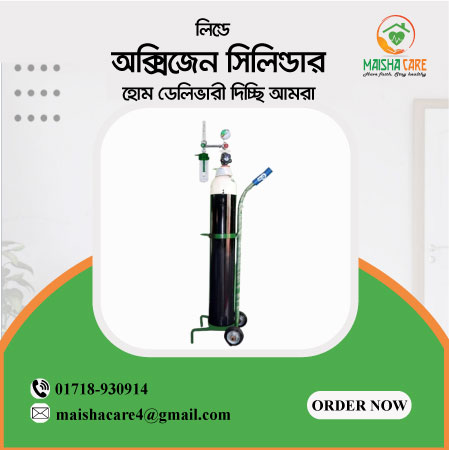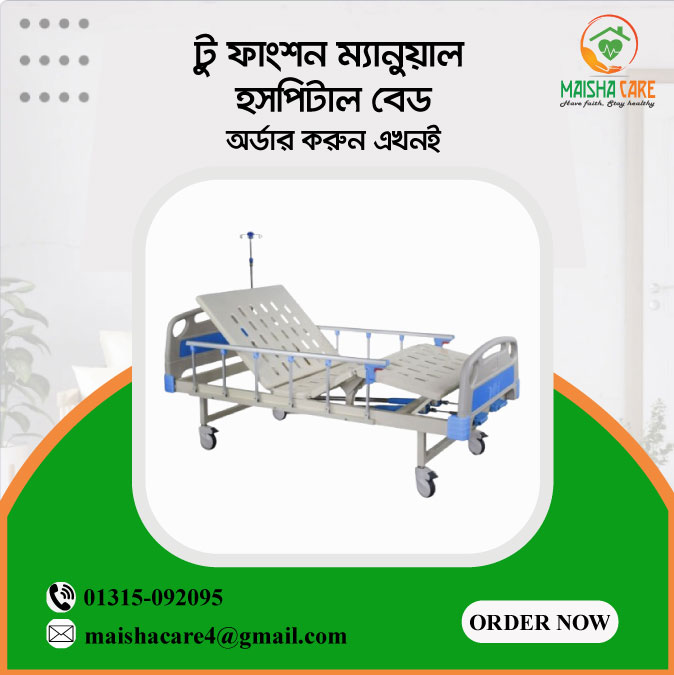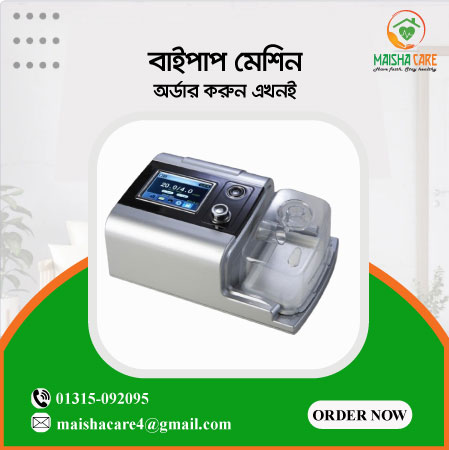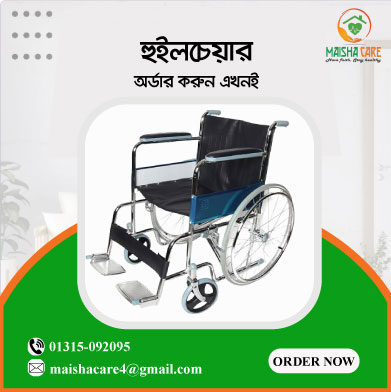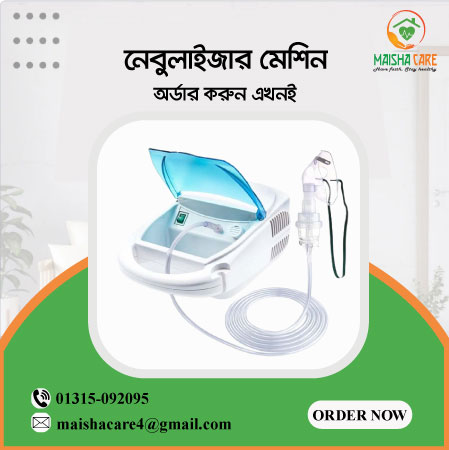

Nursing home care BD: If you want to get home health care services for your sick and elderly family members or relatives, contact us directly. Contact Number: 01718930914. Maisha Care Ltd. is provide the best nursing home care services in Bangladesh. Make sure to provide us with your loved ones details so that we can assist you to the best of our abilities.
OUR SERVICES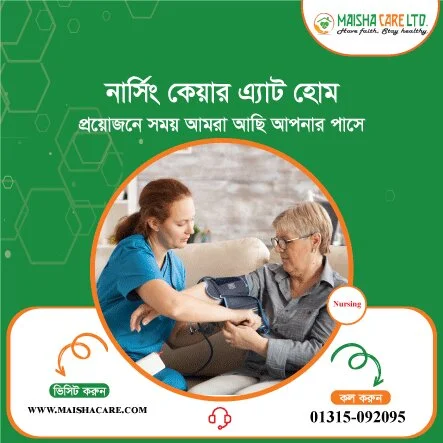
Nursing Care at home
Our nurses are available for homecare services that include dosage of medicines, injections, wound dressing, catheter care, and health monitoring. We specialize in the care of the elderly, post-surgery, and sick patients with utmost dedication and responsibility.
Read More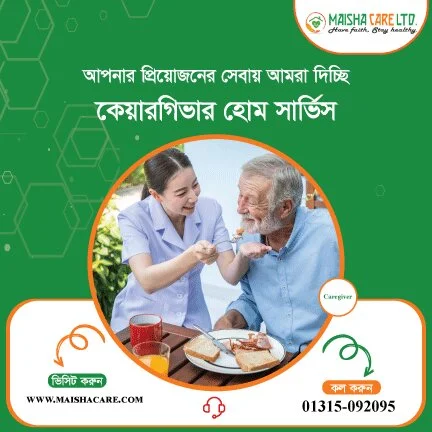
Caregiver Support
Skilled caregivers are available to assist with routine tasks like personal hygiene, feeding, medication reminders, moving the patient, and other basic caregiving services. Care and support for elderly, ill, or recovering patients. Best Caregiver services in Dhaka.
Read More
Doctor Home Visit
Patients can receive a doctor’s check-up, treatment, and follow-up advice in the comfort of their home. This service is ideal for the bedridden, elderly, or sick patients who have difficulty visiting the hospital. Best Doctor home visit services in Dhaka, Banladesh.
Read More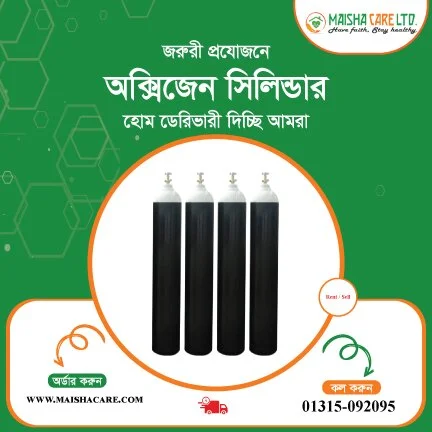
Oxygen Cylinder
In Dhaka, we provide home delivery of oxygen cylinders within an hour. We ensure that our clients who have breathing issues have adequate oxygen supply. Best Oxygen Cylinder Sell, Refill and Rent services in Dhaka.
Read More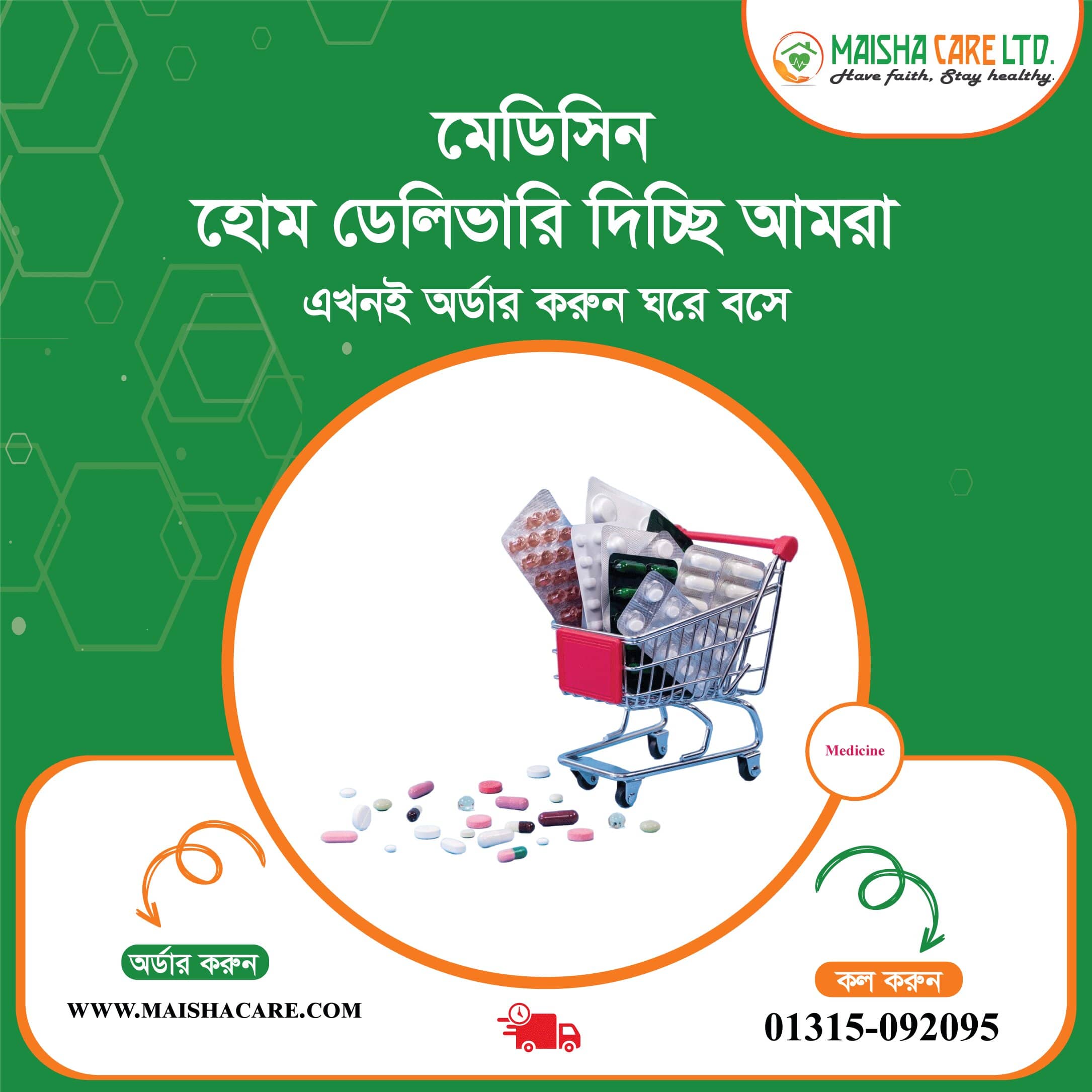
Medicine Home Delivery
We deliver prescribed medicines right at the patient’s doorstep. This service is particularly beneficial to elderly patients and patients on long term treatment. Contact us now to get medicine home delivery anywhere in Dhaka. Any time any where.
Read More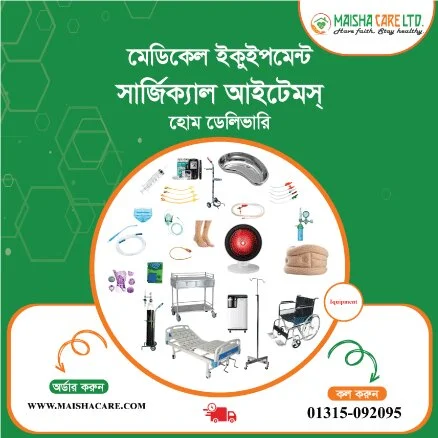
Medical Equipment
We provide hospital beds, wheel chairs, oxygen concentrators, nebulizers, suction machines and other medical equipment. To improve patient care, our products are conveniently delivered to the patient’s home.
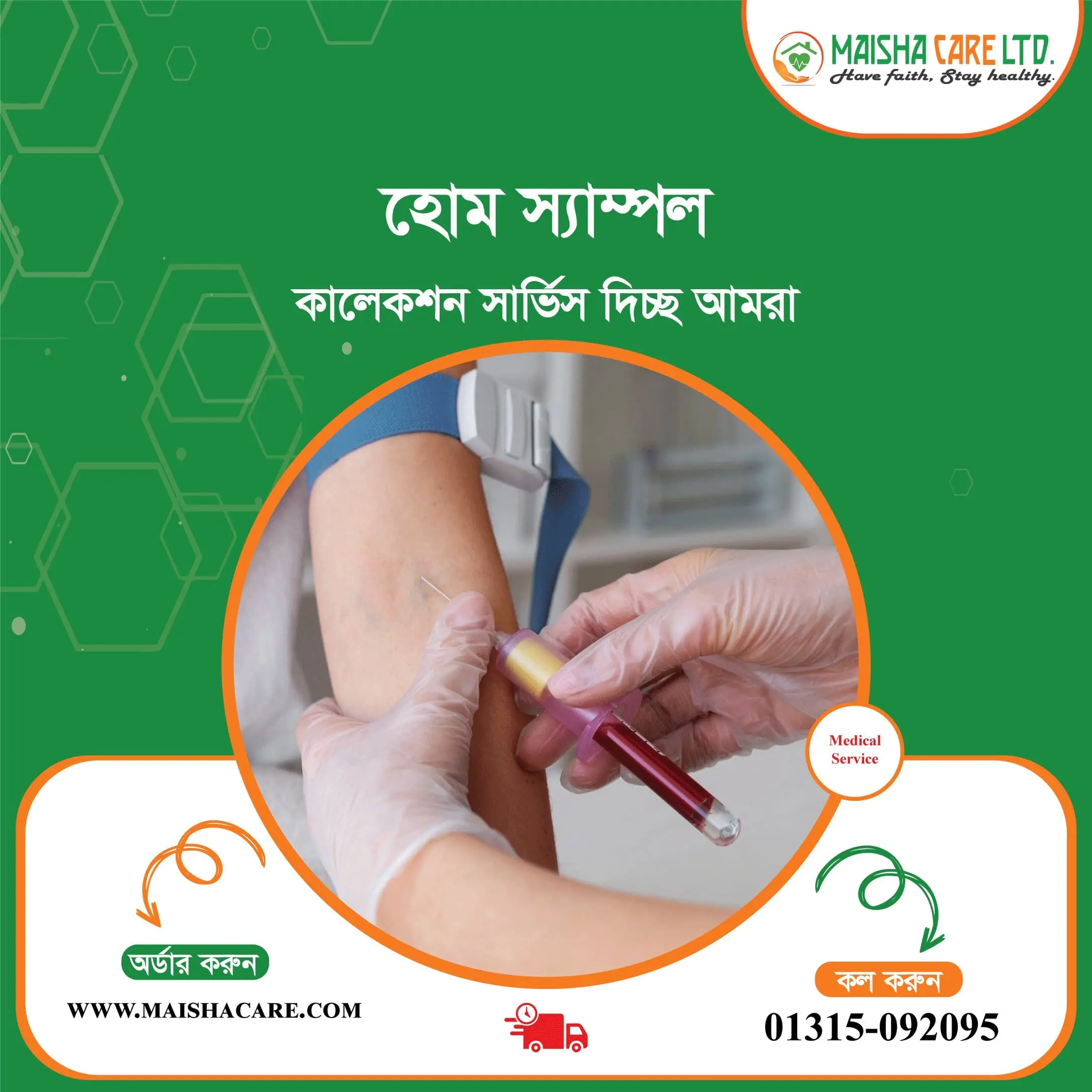
Sample collection
Our team will be at your home to collect blood, urine, and other sample types. The samples are sent to trusted labs for testing. The patients get the test results without even having to step out of their home.
Read More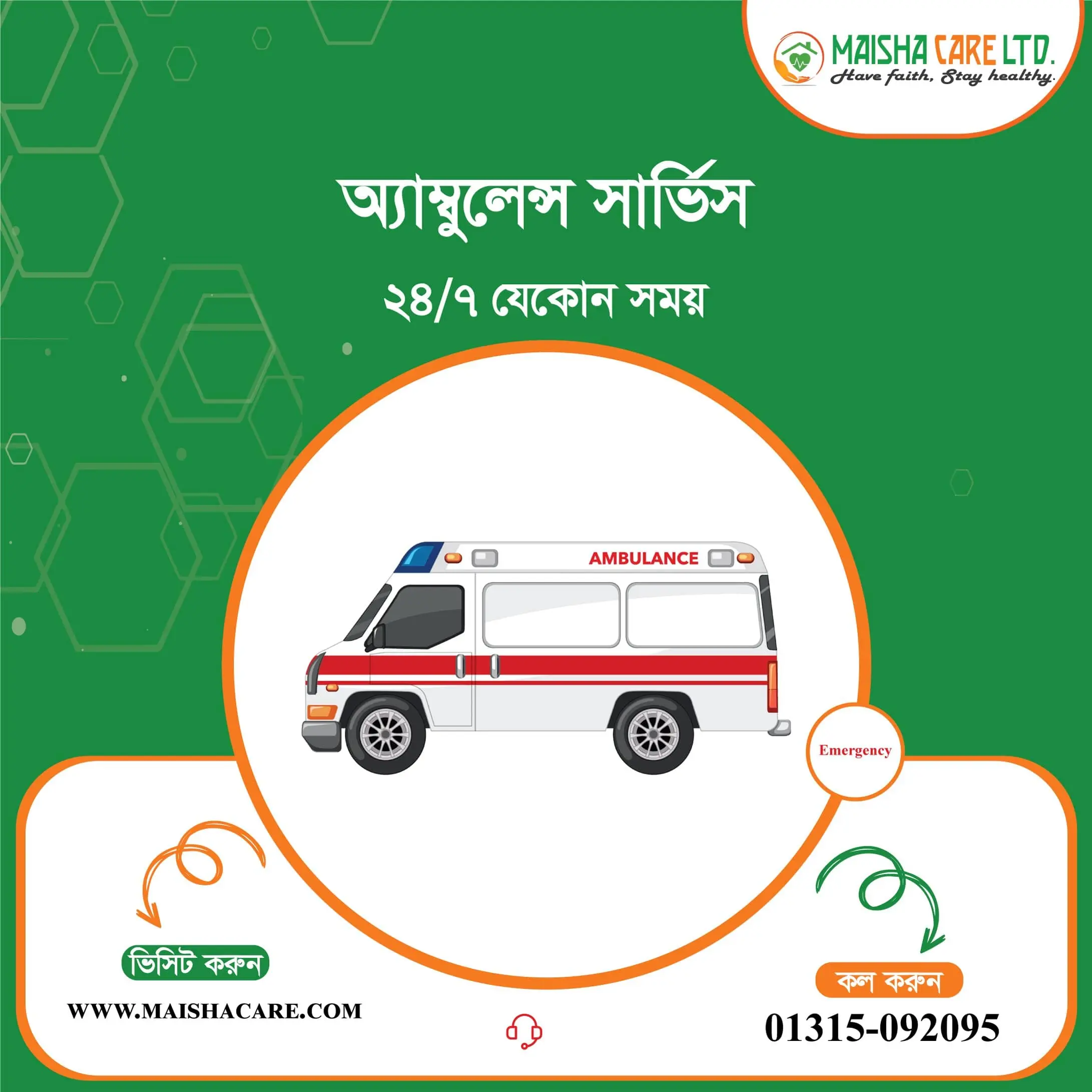
Ambulance service
Patients in need of immediate transportation can call and we will send an ambulance within the hour any day of the week. We have general and ICU ambulances staffed with trained personnel for a safe transfer to the hospital.
Read More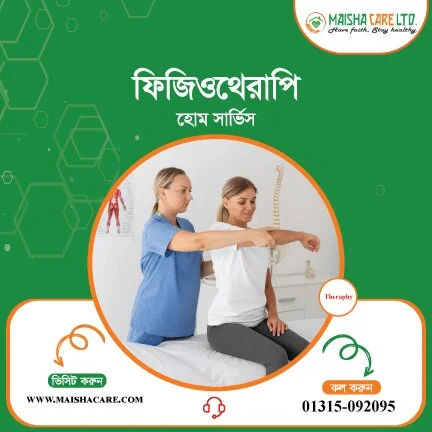
Physiotherapy Home Service
Our physiotherapists come to your home to assist with stroke recovery, joint pain, mobility, and even paralysis. They offer specialized exercises to help with movement and pain reduction. Best Physiotherapy Home Service in Dhaka, Bangladesh.
Read MoreLatest Products
Why Selecting the Best Company for Home Nursing Services Is Important?
A good company for home nursing services guarantee quality care that meets their clients’ specific medical needs, which is very important to a person’s health. This is made possible with reputable companies that hire certified and skilled professionals including registered nurses, therapists and even aides who are able to administer medications, monitor conditions, and deal with emergencies.
As already stated, trusting a company is also very important. A good company guarantees reliability in terms of proper supervision, scheduling, staff background checks, etc. This minimizes the chances of neglect or mistakes and offer trust as well as peace of mind.
Lastly, a dependable company will always be licensed and insured, putting a guarantee that they comply with regulations. This ensures safety measures are put in place and protects you from any liability which low standard providers tend to ignore putting your health at risk.
With a good company, professionalism, trust as well as security are guaranteed, which you truly need when it comes to your health.
Why Choose Maisha Care Limited for Nursing Services at Home?
The well-being of a loved one becomes the priority if they happen to fall ill, and ensuring their care is effective becomes the family’s mission. Home nursing services are ideal for families since the care can be given in the most comfortable surroundings. But care has to be taken in choosing a service provider as it impacts the patient’s welfare. For home healthcare, the name that comes to mind is Maisha Care Limited, which is synonymous with professional and caring nursing services. Below are some of the the reasons supporting Maisha Care’s position as the nursing care provider of choice:
Experienced and Trained
Nurses
Our nurses and caregivers are professionally trained and certified . They are adept in a wide range of services such as administering medications, taking other vital signs like blood pressure, giving injections and other patient needs. Best Home Nursing Care In Dhaka, Bangladesh
more24/7 Service and Emergency Support
In house service, support and attendance at any level 24 hours You can get a nurse or caregiver at any time of the day because our nursing staff is always on duty. In cases of emergencies, prompt action is taken by the dedicated team. Best In-Home Nursing Services in Dhaka.
morePersonalized and Customized Care Plans
Individualized plans for each client and their health issues and requirements. There is always flexibility, so the care plan can be changed depending on available information. In this case, your father will be cared for and attended to where he specifically needs attention.
moreSafe and Comfortable Home Healthcare
Your father can receive premium medical attention while living at home. It is much easier for him to recover while being looked after in a familiar environment. Don't worry, You can get out services, Best Home Health Care Services in Dhaka Bangladesh. Have Faith, Stay Healthy.
more Health Monitoring
and Reporting
Routine checkups can now be done from the comfort of your home. Our nurses are equipped to ensure that blood pressure, sugar, and oxygen levels are checked alongside other important signs, and they will make the necessary reports to the family or doctor afterwards. We provide 24/7 Nursing Care at Home.
more Reliable and Affordable
Service
We are very clear about our pricing - our services cost significantly less than the industry average. At the same time, we are doing everything possible to make sure that our patients are looked after, meaning you can receive the care you need at a price that will not break the bank.
moreAll kinds of Home Care Services in Dhaka, Bangladesh
Nurse Home Care Services in BD
Nursing, caregiving, and medical equipment support- all in one for your home health care. Get the help you deserve today.
Caregiver Services
Skilled Caregivers to help with everyday tasks, medication, personal hygiene, and general patient care in the convenience of your own home.
24- Hour Home Care Services in Dhaka
These services are designed to provide patients who require longer-term care with ongoing support and supervision.
Day- Night Nurse Home Care Services
Round-the-clock nursing care that adapts to your schedule, providing you with trustworthy assistance whenever you need it—day or night.
Home Care for All Disease Patients
From minor ailments to serious health challenges, comfort and care are provided in accordance with the needs of each one. Your health, your way.
All kinds of medical care home services
Nursing, caregiving, and medical equipment support- all in one for your home health care. Get the help you deserve today.
About us
Maisha Care Ltd. has established a reputation as a provider of home nursing and caregiving services in Dhaka, Bangladesh. With more than seven years in this field, we take pride in offering health care services designed and executed with compassion for patients requiring care at home.
Maisha Care Ltd. provide a diverse range of services which includes but is not limited to: professional nursing care, caregiving by trained staff, and home physician visits, physiotherapy, renting of medical supplies, ambulance aid transportation, etc. Maisha Care team Go above and beyond to guarantee that every patient receives proper care, support with routine activities, medications, as well as specialized care for the elderly and those in critical condition.
at Maisha Care Ltd., believe in offering affordable services without compromising patient-specific care. This has earned us a reputation for giving reliable assistance to all patients in need, be it temporarily or on a long-term basis.
Quality Healthcare with Expert Nurse and Caregivers
Our high ranking medical services are guaranteed with our licensed nurses and physicians that are fully committed to your health and satisfaction. The Trust and satisfaction my clients have recieved is attributable to our patient care approach that blends empathy with professionalism.
establishes
07
happy Patients
5092+
qualified nurse
162
expert physicians
65
What is a Caregiver?
A caregiver is an expert with training who helps people who are ill, disabled, or elderly and requires assistance with routine daily activities. Caregivers aid patients with bathing, feeding, medication, moving, and psychological support.
How is caregiver work structured?
Caregivers focus on specific issues for patients so they can personalize their care. Their responsibilities can include the following:
- Offering help with personal activities like grooming, hygienic routines, and feeding
- Observing and updating health issues
- Assisting with patient mobility and exercising
- Attending to patients and offering their emotional support
- Helping doctors and family members for the patient’s better health
Nusing Home Care BD
Home nursing care entails medical assistance from a qualified nurse within the comfortable surroundings of the patient’s home. This service offers support to the elderly, postoperative patients, and others with chronic diseases who would rather stay at home than go to medical institutions.
What Does Home Nursing Care Include?
- Administering Medications - Nurses assist in providing medicines, administering injections, and IV fluids as ordered by the doctor.
- Wound Dressings - Cleaning and covering wounds to promote healing and minimize the risk of infection.
- Health Monitoring - Recording blood pressure, blood sugar, oxygen levels, and other vital signs.
- Post-Operative Care - Supporting patients with home recovery following surgical interventions.
- Geriatric Care – Attending to the elderly in support of their daily activities, bathing, and other hygiene matters.
- Managing Chronic Conditions – Chronic diabetes, stroke, paralysis, heart diseases, and breathing problems.
- Tube and Catheter Care – Care of urinary catheters, feeding tubes, breathing tubes.
- Mobility Assistance – Helping partially mobile or bedbound patients to shift positions or get out of bed safely.
Why Choose Home Nursing Care?
- Better and Easier – Reduces the need to travel to a healthcare facility, which saves on car trips.
- Focused Care – Nurses customize their services to best meet the unique requirements of the patient.
- Quicker Recovery - Family presence significantly improves the healing process for patients, as they often heal better while at home.
- Cost Saving – Extended stays in the hospital can be quite expensive, but homecare options offer a far more affordable solution. With home nursing care, the sick or elderly can remain in their comfortable homes while still receiving proper medical attention and support.
Why is Home Nursing Service Important?
- Comfort & Convenience – Patients get the luxury of treatment at home, without the hassle of having to visit the hospital.
- Personal Attention – Personal attention is provided at every level according to their specific requirements.
- Saves Money – The cost of caring for the patient at home is far less expensive than keeping them in a hospital for a prolonged period.
- Lower Risk of Infection – Infection chances are greatly reduced while staying at home as opposed to being in a hospital.
Nursing Home Care Dhaka: Nursing care in Dhaka comes with a home medic support assured for the patients. Our trained nurses and caregivers render premium health care services, support in medication, routine check-ups of vital signs, wound care, and daily living activities. If your relative is recuperating from an operation, has a chronic disorder, needs geriatric care, or any other form of nursing assistance, we are always there to help. Our patients are provided with the most suitable care possible, alongside greatly benefiting from a complete peace of mind along with their relatives. With our 24/7 nursing supervision, you can rest assured that your patient in the home is receiving the necessary medical care.
Nursing Home Services BD
We are experts in at home medical and nursing care in Bangladesh. Our highly proficient team is always ready to help with daily medical tasks, post-hospital recovery, elderly care, and even babysitting. Our qualified nurses can assist in supervised monitoring care which includes monitoring blood pressure, diabetes, physical therapy, etc. Each and every patient is different which is why we aim to deliver care that meets the exact health requirements and goals of individuals. Our patients can enjoy comfort and safety while we reduce hospital visits to a bare minimum. Families are assured of expert solutions to healthcare and their loved ones can receive the proper care in the comfort of their home
Day Night Nursing Home Care
Our patients can depend on us to receive the medical assistance they need, whenever they need it. Our caregivers and nurses remain on stand-by around the clock to provide medication reminders, personal hygiene assistance, mobility aid, and emergency medical care if required. Be it short-term recovery care or long-term assistive intervention due to aging or illness, our service works towards sustained care and monitoring along with assistance. Nurses provide the needed support as timely medical attention is crucial, and to meet this objective, our nurses are ever ready to assist. Our objective is to make the healthcare experience hassle-free and comfortable at home and easy to access.
Best Home Care BD
Our institution has put in place a home care service that we believe is the best in Bangladesh, offering professional medical attention and services to patients in need. Senior trained nurses and caregivers are enrolled to provide specific post-surgical, elderly, and disability care. Our personnel make sure that medication is accurately dispensed, hygiene is attended to, and health checks are regularly performed. Whether the aim is to facilitate speedy recovery or provide assistance to a deteriorating chronic condition, our clients can trust that out care services have met the standards of quality patient care. A lot of attention is paid to ensure a positive service attitude so that relatives are assured of the well-being of their patients.
BD Nursing Agency
We offer caregiving and nursing services for home-based patients in Bangladesh along with pediatric care. Our nurses specialize in wound care, diabetes care, injections, mobility assistance and other critical healthcare requirements. Whether the patient needs post-operative care, geriatrics, or chronic disease support, we strive to give the best home care possible. Your loved ones are in the right hands with our certified and experienced caregivers who are devoted to their profession. We aim to facilitate your loved one’s health and comfort beyond expectations.
Home Health Care Services
With our home health care services, you can expect to receive exceptional medical care at your home. For patients recovering from surgery, living with chronic illnesses, or need elderly care, we provide professional nursing, physiotherapy, and caregiver support. Our qualified caregivers help patients with mobility, hygiene, medication, daily tasks, and other essentials. By providing customized healthcare services tailored to patients' needs, we help improve their overall quality of life. Our services are specially designed to minimize patient hospitalizations while providing uninterrupted medical care in a comfortable and familiar setting. We strive to provide professional and compassionate healthcare services in the home environment.
Caregiver Service in Bangladesh
We operate in all regions of Bangladesh providing caregiver services to chronically ill, elderly, or disabled patients and ensuring that they receive excellent healthcare from the comfort of their homes. Our caregivers help patients with meal preparation, personal hygiene, mobility support, and medication reminders. They receive special training to care for people suffering from Alzheimer’s, Parkinson’s, stroke recovery, and other long-term care conditions. Our goal is to improve the emotionally supportive and companionable care while increasing the patient’s comfort and independence. You can take a breath knowing your loved ones are under professional and dedicated care tailored to their every need.
Home Services in Bangladesh
In this section, we describe the steps patients can take to receive our home care services. We offer home care services and trained caregivers to meet your needs with compassion and professionalism. Whatever the reason for your health concern, from nursing care, elderly assistance, physiotherapy, or post-surgery care, we are always available to care for you. Besides mobile care assistance, medication supervision and mobility management, proper hygiene is very vital. Our goal is to eliminate healthcare boundaries so patients can receive appropriate care right from the comfort of their homes without the constant need for hospital visits. Our trained staff provides quality compassionate care to all patients and we are truly proud to offer this is service to the entire population of Bangladesh.
Old Care Home in Bangladesh
In this section, we explain ways family members and caregivers can provide elderly individuals with dignified companionship and support, which enables senior citizens to lead fulfilling and positive lives while staying in the comfort of their homes. With the help of a caregiver, elderly individuals can participate in daily activities that enable them to retain their independence such as mobility, bathing, feeding, and getting medication. Elderly companionship has become essential on our services menu as many elderly can hardly cope with feelings of loneliness, depression and anxiety. Besides that great companionship and mental support enables the elderly to be and live with dignity. If they need part time elder home care or full time, we are able to develop a service package that is comprehensive. Care provided to the elderly minimizes chances of illness and frail state.
Nursing Home Care Services
We believe that an individual’s home is the most comfortable place to recover from an illness, which is why we provide an array of home-based healthcare services. Our dedicated nurses provide competent health care services such as vitals check, injection administration, as well as post-operative care procedures like wound dressing. In addition to these medical services, our caregivers also help with personal hygiene, mobility, and daily living activities. Rest Assured, short-term recovery and long-term, assistive care patients alike will receive the same attention and positive outcomes. Treating our patients with dignity and empathy while guaranteeing their comfort and safety during care is our utmost priority. Our vision is to simplify the healthcare system for these individuals and their families.
Home Care Services in Dhaka
Our professional home care service in Dhaka makes sure that every patient within the city has access to world class medical care without leaving the comfort of their home. There is a licensed nurse available for each patient that oversees chronic ailments, elderly care, rehabilitation and other mobility-supporting activities. Elimination of unnecessary hospital visits will now become a greater comfort and benefit to the patients. To crown it all, we also offer medication, physiotherapy, hygiene support as well as emergency medical care by skilled health professionals to all patients when the need arises.
24/7 Home Care
To meet the distinct needs of each rounded individual, our 24/7 home care service is equipped to provide continuous nursing services together with a multi-skilled caregiver aide at follow the patient shifts for daytime or nighttime emergency cases. We have skilled nurses and trained caregivers assisting with hygiene, feeding, mobility, and case specific medication cues. The services we offer create a relaxed environment to foster individualistic caring attention for each patient's medical and comfort requirements. During any time of day or night our nurses are ready and willing to monitor and support patient needs; families can always sleep at ease.
Home Health Care
Home health care is an expression that characterizes a variety of services that healthcare specialists render at the comfort of a person's residence. First, we bring health and nursing services, such as physiotherapy and post-surgery nursing, directly to the patient's home; we help clients suffering from chronic illnesses by managing the disease. We ensure that patients are molded in a casing through which they can comfortably trust through fellowships assisting with feeding, medication and mobility requirements. For variety of patients accustomed to hospital treatments, Home health care services will uniquely meet their needs clinically and psychologically for treatment at arms length dwarfing the need for close hands and steady respect. Patients can notice weight off their wellness, ease and prompt return in the form of their home as integrators of professional health services are there.
At Maisha Care Ltd, caregiving is more than just assistance. It is care, love, and dignity wrapped around vulnerabilities. We can help you or your dearly beloved live effortlessly by providing proper support.
Do not know where to find an individual carer? Leave a message and we will get back to you! 😊
Customer Reviews – Maisha Care Ltd.
Maisha Care Ltd leaves no stone unturned to ensure that high quality home nursing services are offered to every patient in need. Our commitment to excellence in care has earned the trust from numerous families across Dhaka, who opted to share their experiences with us. Explore our client testimonials above to learn how we are continuing to change people's lives at Maisha Care Ltd. For many families in Dhaka we have taken up the trusted partner in healthcare services.
Rekha Habib
Maisha Care Ltd has really impressed me with their home nursing services. A nurse with exceptional skills and a kind heart was provided to my father, who is old and needed constant medical care. The nurse the company sent was simply amazing. She was always on time, well-mannered, and her patience and attention to detail made her great at everything she did. She assisted him with taking his medication, taking his blood pressure, and even helped him with his day-to-day chores. With the support of these amazing services, my father was able to live comfortably in his own home. Best Nursing Home care services.
Abdul Rajjak
Post my surgery, there was a time when I required professional nursing care at home, and Maisha Care Ltd. was really helpful. The nurse they gave me was very skilled and adhered to all the instructions given. She dressed my wounds, assisted me in moving around, and made sure that I was comfortable all the time. The service far exceeded my expectation and I am grateful for their commitment. Their team is very responsive and helpful which makes the whole process easy and hassle free. Anyone looking for home nursing care services in Dhaka, this is the best and most reliable service!
Dr.Said Mustafa Kamal Asif
While searching for a dependable caregiver for my mother, I came across Maisha Care Ltd., which turned out to be a wonderful option. The caregiver was professional, but also friendly and very understanding. She helped my mother take a bath, fed her, and ensured that the medications were administered punctually. I particularly liked the amount of empathy and care from the staff. My mother was at ease and happy, which was my greatest concern. I sincerely appreciate the quality of their home nursing services and recommend them without any reservations. Best nursing agency in Bangladesh.
Frequently Asked Questions
We understand that choosing the right home nursing service for your loved ones is an important decision, and you may have some questions regarding our services. To assist you in making an informed choice, we have compiled a list of frequently asked questions (FAQs) that cover the most common inquiries. These questions are designed to give you a better understanding of what we offer and how we ensure the best care for your family members. If you need further clarification or have specific questions, please don't hesitate to contact us. We are here to provide the support and care you need!
At Maisha Care Ltd, we custom tailor a suite of home care nursing services - elderly care, physiotherapy, post surgical recovery, caregiver support, chronic illness care - to your loved one's needs.
Yes. Our nursing staff and caregivers hold the right training, experience, and certificates to deliver multi-faceted health care services. We train them to address a wide variety of ailments with empathy and care.
You can order a nurse or caregiver through our website, email, or by giving us a call. We will connect with you to discuss what you need and will arrange for a professional who meets your needs.
Yes, we always consider patients and care their needs before assigning a nurse or caregiver to them. If you have preferences, we do our best to fulfill them as long as it is not too specific for quality care of your loved one.
Yes, we have professional nurses available to provide nursing care to patients in their homes all day for 7 days a week. We have professionals available to provide care at all times, both day and night.
Our services cost is determined by the type of care, duration and how much medical attention is required. Kindly, reach out to us directly so we can provide you a quotation that will be tailored to your specialized requirements.
At this moment, our services are only available in Dhaka, however, we are working on our nursing expansion to other aid regions. Contact us directly to learn more about the service we can provide and the areas we cover.
We have different options of payment. For your convenience, you can pay by bank transfer, cash, or any of the other methods we accept. Our team will confirm payment methods available upon confirming the service.
Should you be unsatisfied with the assigned caregiver or nurse provided for you let us know as soon as possible, we will see to it that we resolve any issues by either providing extra help or changing the professional to a different practitioner who is more suitable.
For cancellations or rescheduling, please get in touch with us a minimum of 24 hours before you want the service altered. We will try our utmost to help you adjust your arrangements, as well as assist you with any needed cancellations.



